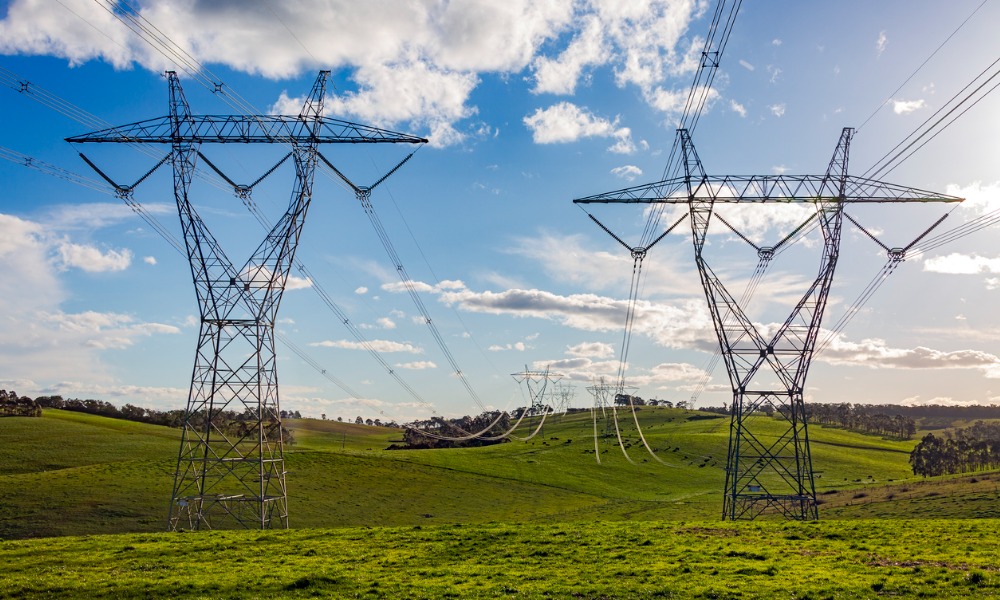ESA calls for greater awareness during Powerline Safety Week

In the bustling world of construction, the looming presence of overhead powerlines often fades into the background noise of daily tasks and deadlines. However, the Electrical Safety Authority (ESA) is sounding the alarm on this oversight during Powerline Safety Week, shedding light on the pressing need for heightened awareness and better training practices across the industry.
Patrick Falzon, a powerline safety and code specialist at the ESA, emphasizes the stark reality of the dangers posed by these silent sentinels. "In just the last decade, we've witnessed 1,400 incidents involving powerlines, many of which could have been prevented with proper precautions,” Falzon explains. “Unfortunately, the stakes are incredibly high, as these encounters have resulted in tragic fatalities.”
Eight people have been killed in the past decade, and there have been 20 deaths over the past two decades. One of those workers, a 20-year-old arborist, was electrocuted after hitting a power line while trimming a hedge in Ottawa on May 5, 2023. His supervisor is now facing a criminal charge.
A recent survey conducted by the ESA highlights a concerning gap in knowledge and training: only 18% of trade workers can correctly identify the safe distance to maintain from overhead powerlines (3 meters), and even fewer, 26%, know the safety boundary for downed powerlines (10 meters). This survey reached out to approximately 400 construction trade workers across Ontario, combining in-person questionnaires with online submissions to gather a comprehensive understanding of the current safety knowledge landscape.
Falzon points out the troubling misconception that continues to put lives at risk: "70% of survey respondents thought it was safe to touch a powerline if it was covered with an orange identifier, which is purely meant for visibility, not protection."
These statistics reveal a stark reality: there is a critical need for ongoing education and communication about powerline safety. Here are some actionable tips for safety leaders aiming to cultivate a safer work environment:
- Regular training sessions: Implementing routine safety training that includes specific modules on powerline safety can significantly reduce risk. Focus on interactive and engaging content to help workers retain crucial information.
- Visual safety aids: Utilize clear, visible signage at job sites that illustrate safe distances and highlight the presence of powerlines. Consider using flags or other high-visibility markers instead of orange covers to avoid giving a false sense of security.
- Pre-task safety briefings: Before any work begins, especially in areas where powerlines are present, conduct a safety briefing to reinforce the day's hazards and the specific precautions needed.
- Promote a safety culture: Encourage workers to speak up about unsafe conditions and to actively participate in safety discussions. Recognize and reward safe behavior to reinforce its importance.
- Collaborative efforts: Work with local utilities and safety authorities to provide workers with the most current information and training resources. These partnerships can also offer practical insights into the specific challenges and solutions related to powerline safety.
Falzon urges industry leaders to take these findings seriously, "We need to bridge the gap between awareness and action. It's not just about knowing the dangers but actively preparing to avoid them."
As the week dedicated to powerline safety unfolds, Falzon remains hopeful. "With concerted effort and commitment, we can change these statistics for the better. Let's work together to ensure that every worker returns home safely."
By fostering an environment where safety training is as fundamental as the tools of the trade, health and safety professionals can significantly mitigate the risks associated with powerlines. It's time to turn awareness into action and ensure that these critical safety practices are not just understood but ingrained in the daily operations of every construction site.





